
Where was Edward Hopper's Nighthawks diner?
Edward Hopper in New York
Edward Hopper was a prominent American painter of the 20th century, probably the most prominent realist painter of this period. His style is distinctive, and many of his works, especially Nighthawks, are widely recognizable. That painting depicts a corner diner. Let's see if we can figure out where Hopper's Nighthawks diner was located.
Hopper was born in 1882 in Nyack, New York, a short distance north of the city of New York on the Hudson River. By his teens he was drawing in pen-and-ink and charcoal and painting in watercolor and oil.
He wanted to be an artist, and his parents wisely insisted that he study commercial art so as to have a much more reliable source of income. He studied for six years at the New York Institute of Art and Design, as did George Bellows, another artist known for both commercial illustration and views of New York. The nude models were a shock for Hopper given his strict Baptist background.
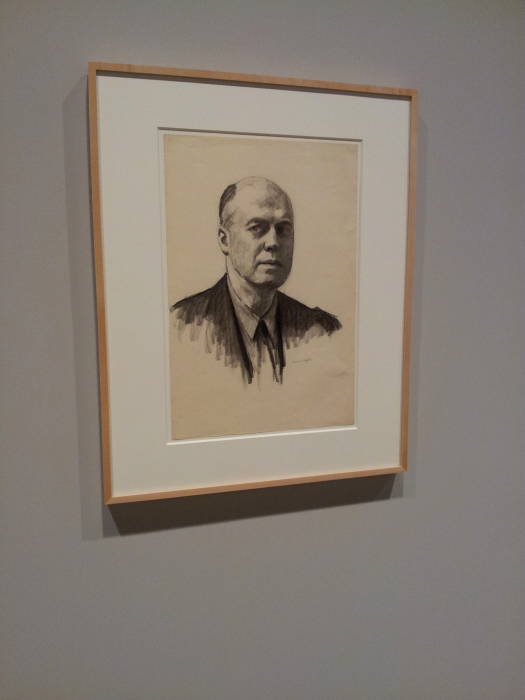
Hopper got a part-time job with an advertising agency in 1905. He came to hate illustration work, creating covers for trade magazines, but it paid his bills until the mid-1920s. He traveled to Europe three times during the first few years after 1905. He spent most of his time in Paris but he studied and worked alone and did not connect to the Paris art community of that period. Some of what he did then was much like the work of the impressionists in topic (scenes along the Seine, for example) and style.
After he returned from his last trip to Europe, he rented a studio in New York City and returned to illustration work. It was drudgery that took the place of the artistic work he really wanted to do. In 1912 he traveled to Gloucester, Massachusetts, and created his first American outdoor paintings.
The Armory Show of 1913 was enormously influential in American art. It was held in the 69th Regiment Armory on Lexington Avenue in New York from mid February until mid March of 1913. It startled Americans by introducing trendy European experimental styles such as Cubism, Futurism, and Impressionism, displaying about 1,300 paintings, sculptures, and decorative pieces produced by over 300 avant-garde European and American artists.
Hopper made his first sale of a painting, Sailing, produced two years before in 1911, at the Armory Show. His work had been displayed along with pieces from Paul Cézanne, Edgar Degas, Marcel Duchamp, Paul Gauguin, Vincent van Gogh, Henri de Toulouse-Lautrec, Édouard Manet, Henri Matisse, Claude Monet, Edvard Munch, Pablo Picasso, Camille Pissarro, Pierre-Auguste Renoir, Auguste Rodin, Georges Seurat, and many others whose work is displayed today in top museums. The exhibition moved on to the Art Institute of Chicago and the Copley Society of Art in Boston.
Later in that same year of 1913, Hopped moved into an apartment near the northeast corner of Washington Square Park in the Greenwich Village area of New York.
Hopper continued painting when he could, but illustration was paying the bills. He received a commission for some posters and publicity works for a movie company in 1914. In 1915 he turned to etching, and through the end of the First World War he made posters for commercial projects and for the war effort. He won the Shipping Board Prize for a war poster Smash the Hun, paralleling fellow NYIAD student George Bellows' paintings and posters publicizing German atrocities in Belgium and elsewhere.
Hopper continued exhibiting his work, and his career slowly built up. He married Josephine (or Jo) Nivison in 1924, they lived in the Washington Square apartment and she managed his career. They divided their time between the summers in South Truro on Cape Cod and the rest of the time at the apartment. She got six of his watercolors into an exhibit at the Brooklyn Museum, which purchased one for $100 for their permanent collection. Things took off from there.
He sold the movie-theatre-set Two on the Aisle in 1927 for $1,500, his largest sale price so far. He used that income to buy a car, which he used to explore New England for new locations. He had painted House by the Railroad in 1925, the art collector Stephen Clark donated it to the Museum of Modern Art in 1930, making it that museum's first oil painting.
The Great Depression had arrived in late 1929, but Hopper did far better through that period than most other artists did. In 1931 some major museums including the Metropolitan Museum of Art and the Whitney Museum of American Art began paying thousands of dollars for his paintings.
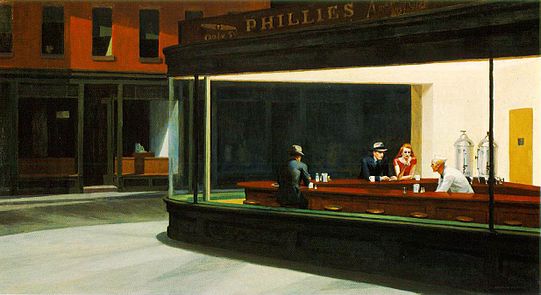
Nighthawks
Nighthawks is Hopper's most recognizable work, finished in 1942. It shows a group of people in a diner late at night. Jo's handwritten notes on the painting say:
Night + brilliant interior of cheap restaurant. Bright items: cherry wood counter + tops of surrounding stools; light on metal tanks at rear right; brilliant streak of jade green tiles ¾ across canvas—at base of glass of window curving at corner. Light walls, dull yellow ocre [sic] door into kitchen right.
Very good looking blond boy in white (coat, cap) inside counter. Girl in red blouse, brown hair eating sandwich. Man night hawk (beak) in dark suit, steel grey hat, black band, blue shirt (clean) holding cigarette. Other figure dark sinister back—at left. Light side walk outside pale greenish. Darkish red brick houses opposite. Sign across top of restaurant, dark—Phillies 5¢ cigar. Picture of cigar. Outside of shop dark, green. Note: bit of bright ceiling inside shop against dark of outside street—at edge of stretch of top of window.
So the "hawk" is the man facing us? Hopper's original title for the work was Night Hawks.
Jo reported that Edward had worked on the painting for "about a month and a half." She had posed for him as the woman in red.
Visitingvan Gogh's
Night Café
One of Hopper's biographer speculated that Vincent van Gogh's Night Café may have inspired Hopper to produce Nighthawks. Night Café was exhibited at a New York gallery in January of 1942, and other works by Hopper had been exhibited along side it twice before.
Nighthawks has certainly been parodied often enough, with versions in orbit with and without the Enterprise crew, in what appears to be Tintin in Greenwich Village, on Tatooine, and in Springfield, where the diner suddenly has booths.
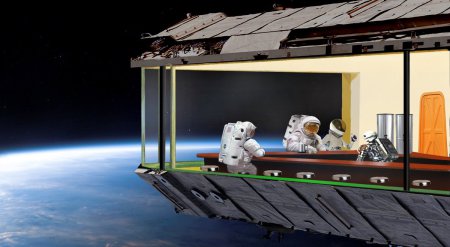
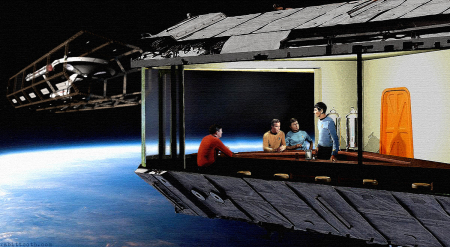

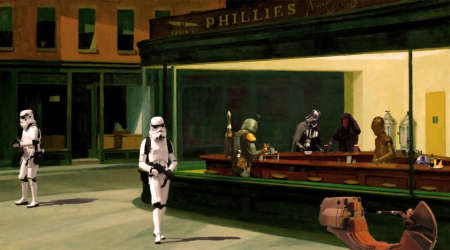
The real Nighthawks was purchased by the Art Institute of Chicago for $3,000 soon after Hopper completed it.
Some film critics argue that some of Hopper's paintings influenced the look of film noir. Ridley Scott, the director of Blade Runner, said "I was constantly waving a reproduction of this painting under the noses of the production team to illustrate the look and mood I was after." Noted film critic Roger Ebert wrote that Dark City featured "store windows that owe something to Edward Hopper's Nighthawks."
Hopper's Studies for Nighthawks
In the late summer and early fall of 2013, the Whitney Museum in New York had a special exhibit of Hopper's work.
Hopper's widow Jo had given their collection of more than 3,000 works including Edward's remaining material to the Whitney. This special exhibition in 2013 brought some of his famous oil paintings together with the pencil and ink sketches he used to prepare for those paintings. This included Nighthawks and others.
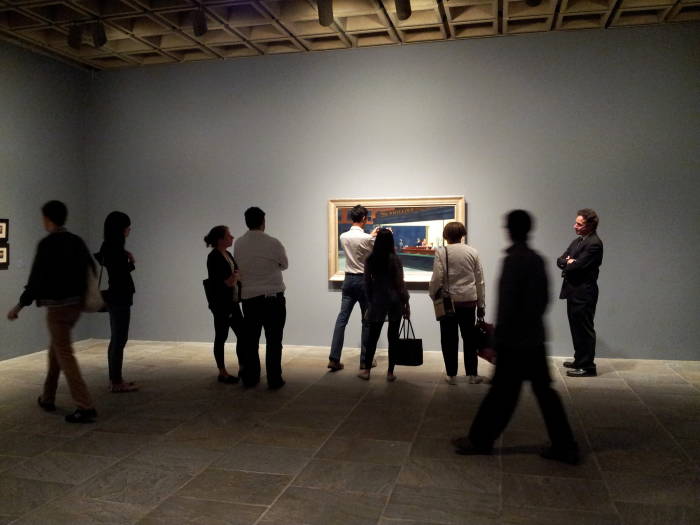
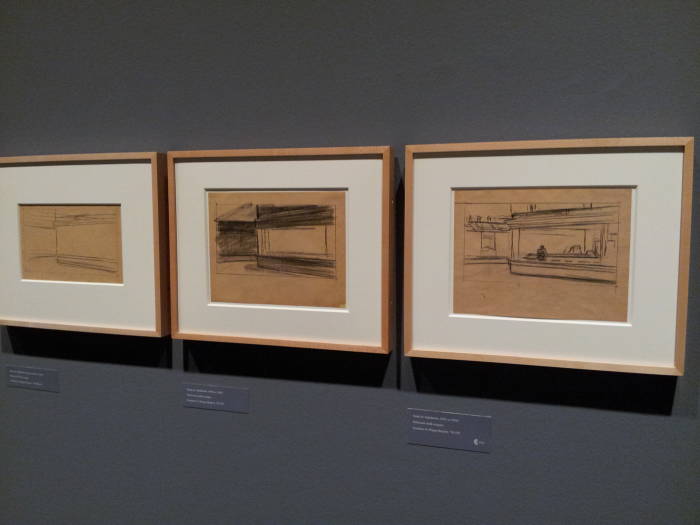
One series of three sketches builds the setting and basic structure of Nighthawks.
First, just a few nearly parallel lines.
Second, filling in some of the diner and the darkened building beyond.
Third, a few more details and suggestions of the figures.
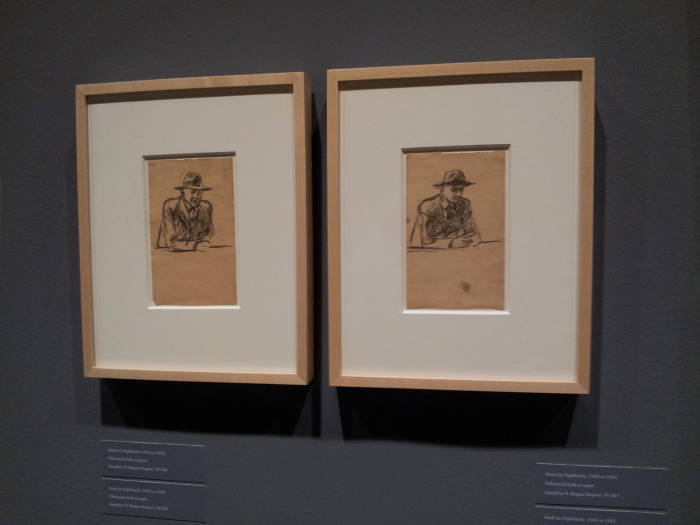
Hopper did a series of studies for the man of the couple. Jo would pose as the woman in red.
Further studies build up the lone man and counter clutter.
Hopper visited coffee shops and bars around Greenwich Village sketching patrons.

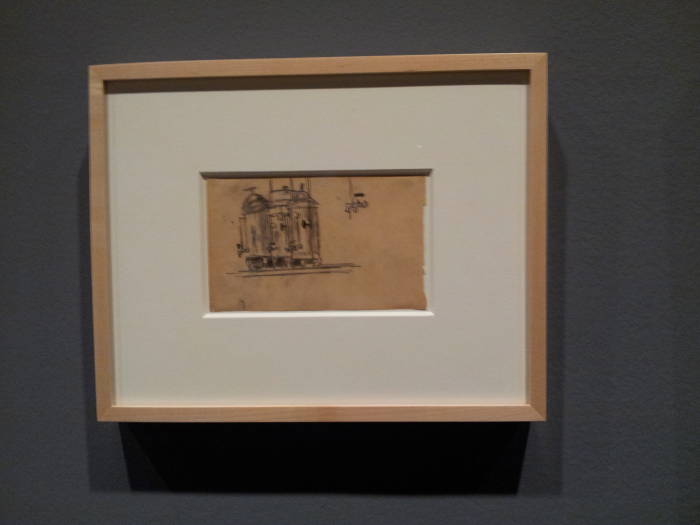
He worked on examples for the coffee urns. I've seen a Star Wars parody in which R2D2 is up on the rear counter in the urns' place, with C3PO as the server.
His further sketches assembled the components. The final sketch in the series is pretty close to the final painting.

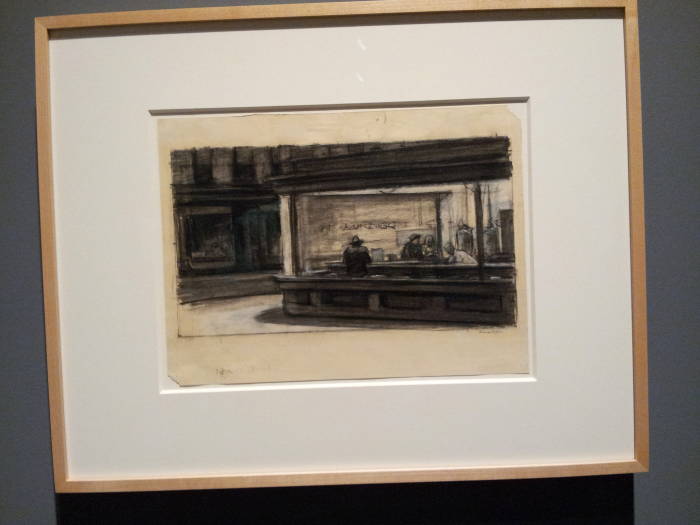
Hopper's Home on Washington Square Park in Greenwich Village
Edward Hopper lived at #3 Washington Square North at the northeast corner of Washington Square Park from 1913 until his death in 1967.
The buildings of #1, #2, and #3 Washington Square North are now owned by New York University, which in 1994 finished renovated them into its Center for Social Work, housing conference rooms, classrooms, meeting areas, offices, and a student lounge. #3 is now the Ruth Lewis Farkas House, named for a life trustee of the N.Y.U. Medical Center and a trustee of N.Y.U.
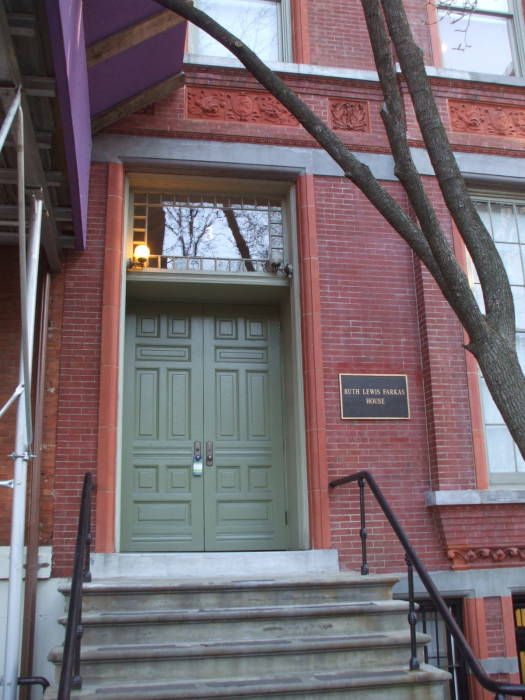

She and her husband, the founder of the Alexander's department stores, contributed $300,000 to Richard Nixon's re-election campaign in 1972. Nixon won, and appointed her Ambassador to Luxembourg in 1973. As her obituary in the October 22 1996 New York Times reported:
She maintained close ties with the Government, gave quiet and unpretentious parties and, unlike many envoys, avoided making political statements about United States policy. Most diplomatic work was carried out by her six-member staff, and in the Luxembourg diplomatic community, which then included 13 other ambassadors, Mrs. Farkas, though serious, was not considered a heavyweight.
President Gerald R. Ford accepted her resignation in 1976 and replaced her with Rosemary L. Ginn, a longtime Republican national committeewoman from Missouri.
Where was the Nighthawks diner?
Hopper himself said that Nighthawks "was suggested by a restaurant on Greenwich Avenue where two streets meet."
It was suggested by, as the painting was not a precise representation of any one place. It's a composite of locations. The low curved glass probably represents the ground floor of the Flatiron Building more than any small diner in Greenwich Village.
But the painting was surely based on features from various locations near Hopper's home. And I'm not the first person to go looking for those locations.
Looking for the Nighthawks diner at Greenwich Avenue and 12th Street
Mulry Square is signposted as the intersection of Greenwich Avenue with Seventh Avenue, a few blocks north of the Christopher Street — Sheridan Square MTA station and even closer to the 14th Street station entrance, which is actually at 13th. The triangular block bounded by Seventh Avenue, Greenwich Avenue, and 12th Street is said by some to be the diner's location.
According to this theory, the diner was at the narrow western corner of that block where 12th and Greenwich meet, with the painting depicting the view from near where the east end of Bank Street terminates at Greenwich.
Here is that view in the evening.

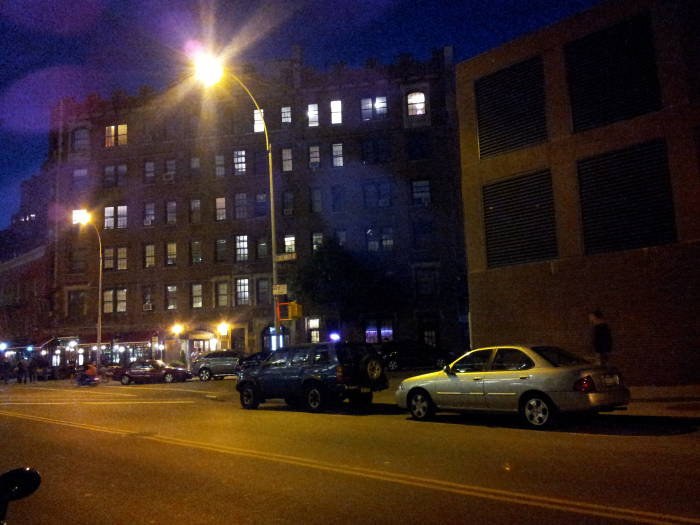
Continuing west on Greenwich Avenue, we near what would be the painting's viewpoint if this were really the location.
Maybe, if we allow for a lot of artistic license...
Let's come back during the day. Here we're looking northwest on Greenwich Avenue from where it crosses 7th Avenue and 11th Street terminates.
We will come back here later and turn around to find a much more likely inspiration for the painting. But meanwhile, the purported Greenwich-12th intersection is beyond that low brown triangular building in the distance.
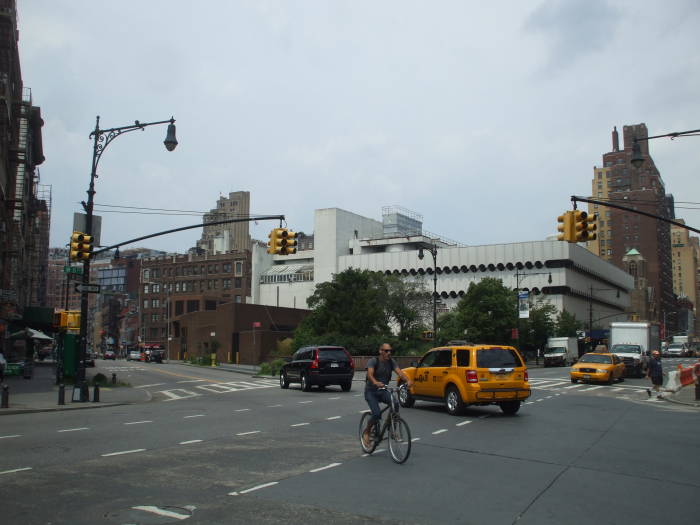
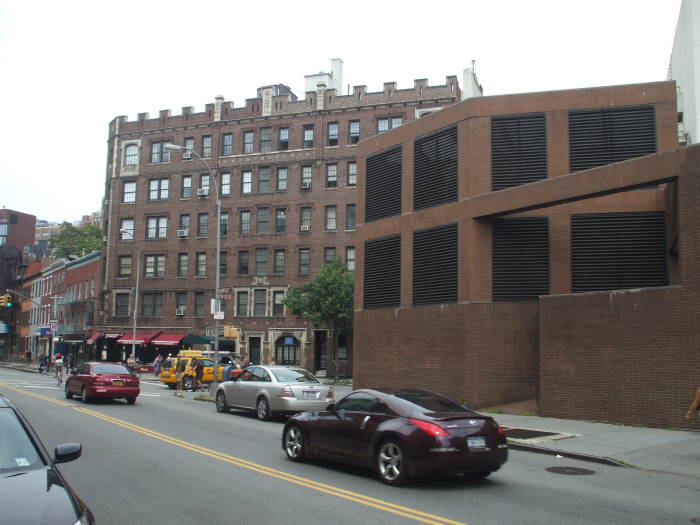
By 2017-2018 this structure had been torn down and the triangular block was a park.
We have crossed the end of Bank Street and are approaching 12th. The rather industrial appearance of the brown brick structure largely distracts us from seeing a historical diner. This structure seems to combine cooling and air handling with compressed gas delivery and storage for the hospital across 12th Street to its north, out of view to our right in this view.
This would be a little closer to the view in the painting, but it still doesn't look very much like it at all. The corner of the diner would be the corner of the brown industrial building right beyond the silver car.
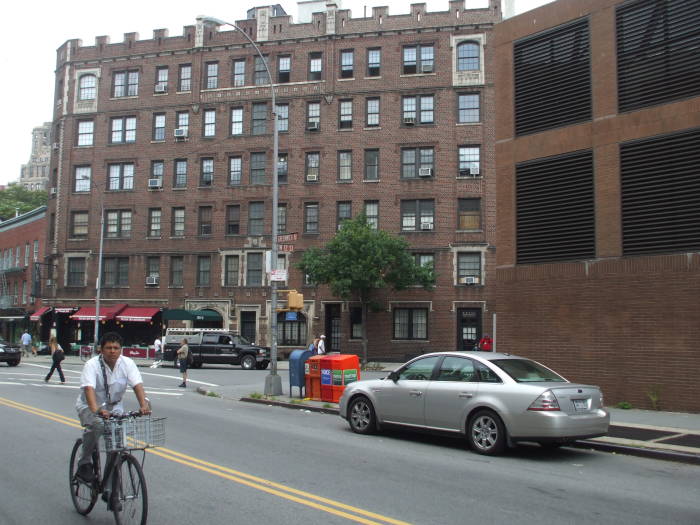

We're right outside where the diner window would be, if this were the location.
Let's step around the corner and look to the left out of the painting from the far side of the diner.
In the first picture below, we're standing outside the corner of the theorized diner, looking to the left out of the picture.

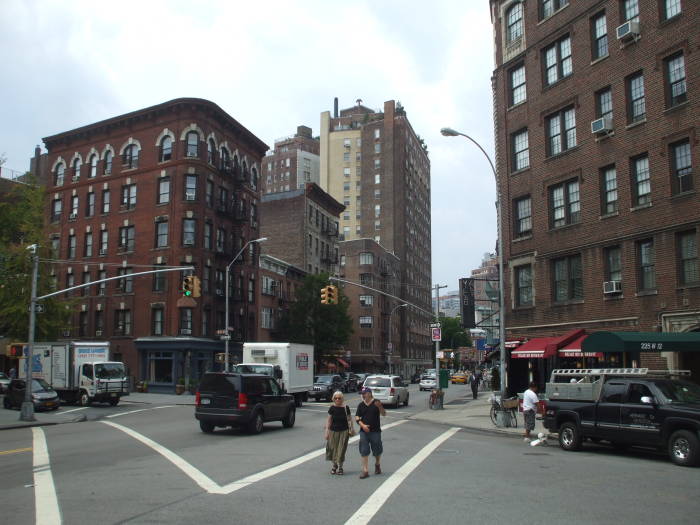
In this picture, we're looking back toward the painting's viewpoint, if this were the correct location.
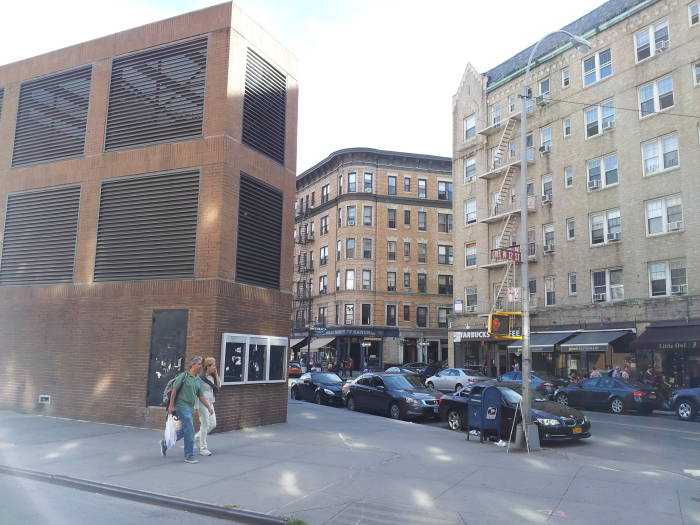
Looking for the Nighthawks diner at Greenwich Avenue, 7th Avenue and 11th Street
The 2013 Whitney exhibition had some historical pictures of the corner of Greenwich Avenue and 11th Street.

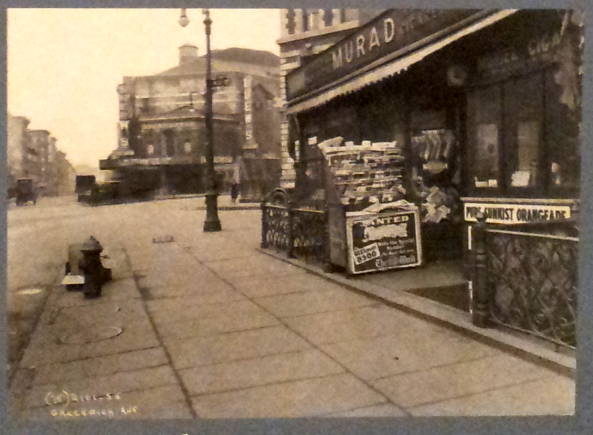
The first picture above shows that corner in 1914.
The second shows that same intersection in 1926.
Now we have found the closest thing to Hopper's angular diner left today in the neighborhood!
The following pictures show the southeast corner of Greenwich Avenue and West 11th Street in 2013.
West Village Florist occupies the sharply angled corner, with an address of 70 Greenwich Avenue.

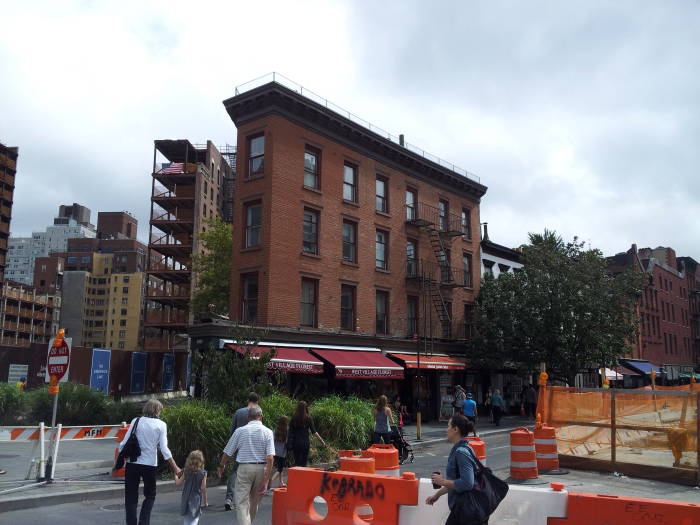
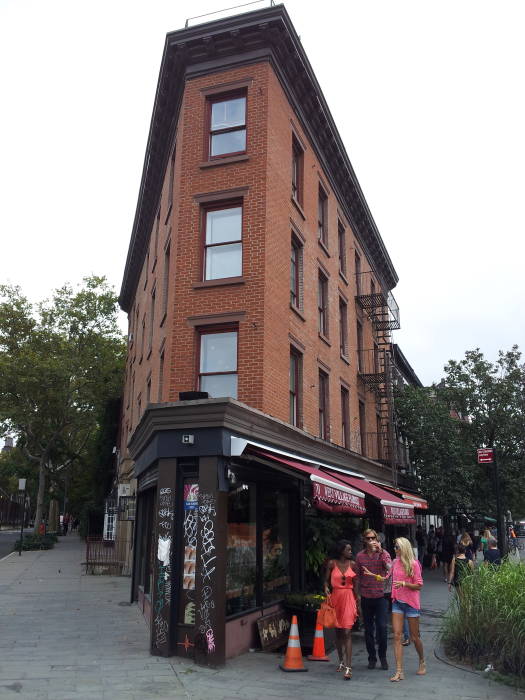

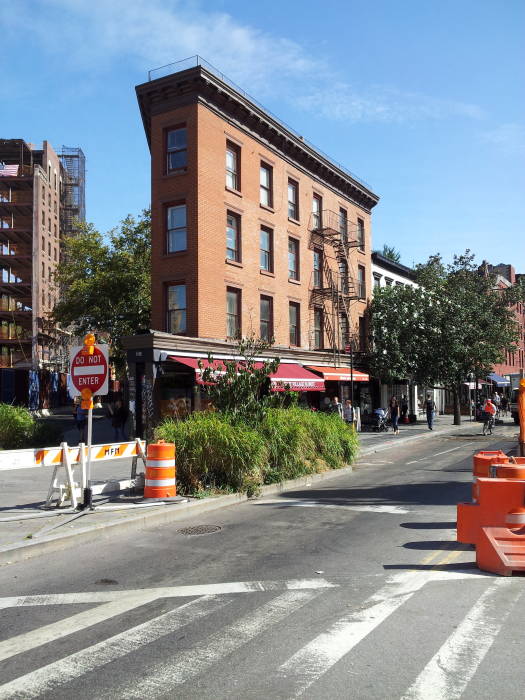
These last two pictures are from the closest spot I can find for recreating the Nighthawks image.
But remember what Hopper said:
[...]
I simplified the scene a great deal and made the restaurant bigger.
So where was the diner?
It existed in Edward Hopper's imagination. It was built from a combination of real diners and coffee shops and bars in Greenwich village, and populated by a combination of their late-night patrons.
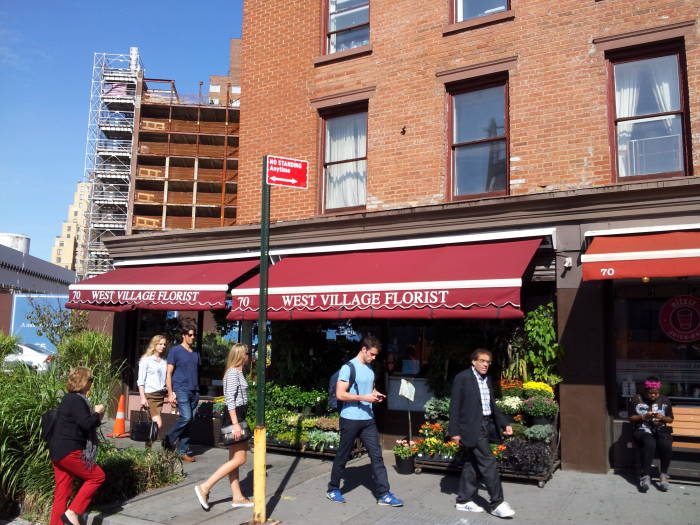

The Homages Continue
Pete's Diner in Lafayette, Indiana, has added an homage to Nighthawks.
The painting is on the Sixth Street side of the building, stand there and look diagonally past it to the Lafayette Theater and beyond that to the Lafayette Brewing Company.



Back to the Travel Recommendations
